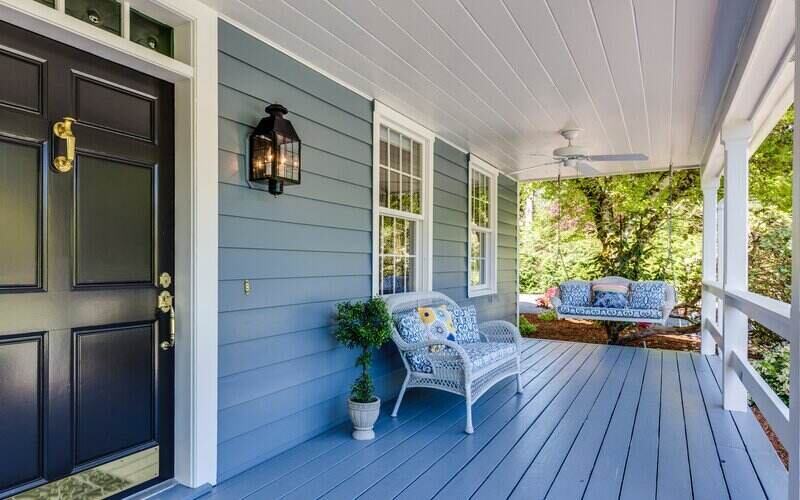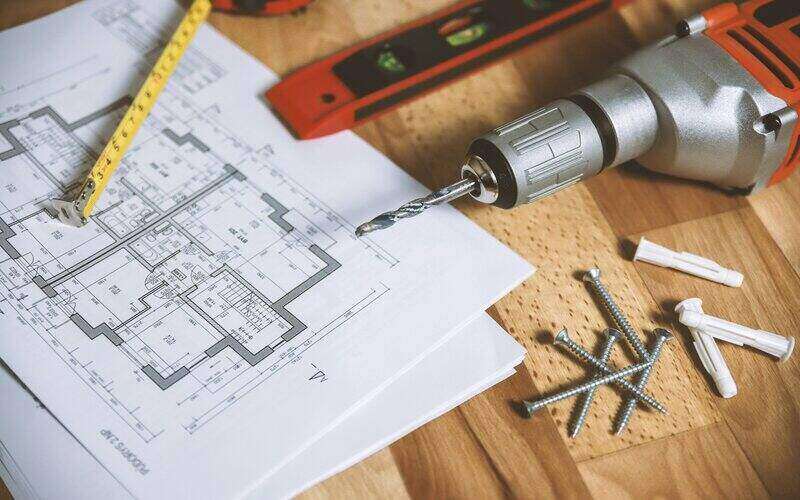Like bees to honey, Aussies are rushing to refinance their home loans to a sweeter deal off the back of rising interest rates and cost of living pressures. In fact, ABS statistics for June 2022 revealed the value of external owner-occupier refinancing (i.e. home loans refinanced from one lender to another) rose 9.7% to $12.7 billion - an increase of 24.6% compared to the same period a year ago.
For a number of Australians, refinancing is the equivalent to finding a pot of gold at the end of the rainbow - putting savings back in pockets at a time when cost of living pressures are putting a strain on household budgets. Mortgage prisoners do not have that luxury, as they are unable to refinance their mortgage for a number of reasons that we’ll look at below.
What is a mortgage prison?
Many Aussie households are bracing for what is to come by navigating the home loan market, but may be faced with the prospect of becoming trapped in a mortgage prison.
A mortgage prison is the catch-22 scenario where homeowners are stuck paying an uncompetitive rate, unable to refinance to a cheaper home loan due to a combination of:
- Increased HEM calculation based on higher living costs
- Increased interest rates, serviceability buffer, ruling you out as a prospective borrower
- Interest rate rises and cost of living affecting borrowing power
- And/or a lower home valuation from the new prospective lender, which also eats into equity
CommBank financial results for July to December 2022 released Wednesday show the average single owner occupier mortgage applicant has seen their borrowing power reduced by some 40 percentage points from the peak in late 2020/early 2021.
More than one-in-10 homeowners are borrowing at capacity, a 1.8 percentage point increase from the six months prior.
The types of mortgage prisoner
Falling property price, rising loan-to-value ratio
Unloan CEO Daniel Oertli said one type of mortgage prisoner is a borrower that was teetering on the limit of a particular loan-to-value (LVR) ratio, but has since breached that limit because their property has fallen in value.
“We’re in a market now where that is starting to happen, especially if you bought at the peak and you no longer qualify for that LVR,” Mr Oertli told Savings.com.au.
“So for instance, say you bought at an LVR of 80%, but because your house price has fallen and you haven’t put in anything above your current repayments, your LVR might now be 85% which means you’re into the more expensive category of home loans.
“The very best deals range typically for those LVRs between 70 and 80% LVR, which means you would now be unable to access the deals you might have previously been able to when the house price was where you bought it at.”
Higher serviceability
Another type of mortgage prisoner is one that’s ensnared by responsible lending standards, according to Mr Oertli.
“In this case your LVR is fine, but the higher serviceability requirements mean the new assessment (when refinancing) is done at a higher rate plus the buffer, not just the rate you are currently on,” he said.
“This is particularly the case in a rising rate environment where you obviously have qualified previously with the buffer in place, but now that rates are up again, even though you’d be better off financially, you can’t necessarily qualify at the current rate plus the buffer.”
In response to soaring household debt amid the booming property market, the Australian Prudential Regulation Authority (APRA) lifted the serviceability buffer for home loans from 2.50% to 3.00% back in October 2021.
The serviceability buffer exists to ensure you can afford not only the advertised interest rate, but withstand any potential rate rises as well.
As an example, say you have a 2.00% fixed home loan rate that is due to expire next month. Originally this 2.00% p.a. fixed home loan was serviced under APRA’s previous buffer of 2.50%, meaning the bank assessed your ability to repay based on a 4.50% p.a. interest rate. Now with rates rising, you look to refinance to a 5.99% p.a. fixed rate home loan. Under APRA’s new buffer, your ability to repay is now based on a 8.99% interest rate, double what you were paying previously which as a result you now do not qualify for.
Insufficient credit rating
Mr Oertli says a third type of mortgage prisoner is one that’s trapped by their own credit report.
“You might have missed a repayment and again some of the very best deals are quite stringent about your credit history,” he said.
“Even if your LVR and serviceability is not a problem, if your credit history has deteriorated, for whatever reason, you may not otherwise be able to access a better mortgage deal.”
Ways to avoid becoming a mortgage prisoner
There are a number of steps you can take now as a mortgagor to avoid feeling like you are trapped behind bars in the future.
Two Red Shoes Mortgage Broker Brett Sutton has outlined a number of tips for Aussie households to both insulate against the risk of a mortgage prison and escape a mortgage prison without the risk of potential foreclosure.
1. Manage debt-to-income ratios
When looking to refinance, Mr Sutton notes it is important to be mindful of how additional consumer debt such as car loans, credit cards, store cards and even loans for investment properties can impact your borrowing capacity.
“Many major lenders have a debt-to-income ratio policy of six-times the annual income of applicants,” he said.
“Rarely is the owner-occupied loan the problem. More often it's the subsequent debts and loans that a mortgagor has taken out after getting their home loan that’s causing the issue.
“Mortgage holders should consider closing or reducing their unused credit cards, timing the payout of car loans with the expiration of the fixed-rate loan roll off, and temporarily halting investment spending to reduce their risk.”
In this rising interest rate environment, many lenders have reduced their lending for debt-to-income ratios above six-times, and won't lend above seven-times.
2. Refinance early to get ahead of the game
Mr Sutton details as part of responsible lending policy banks stress test the loan at a rate of 3% above the interest rate offered.
“An example of this is when rates were lower you would have applied for a 2.00% p.a. mortgage with a buffer of 3% which equals a total of 5%. Now rates are 5.00% p.a., you may no longer qualify with the standard assessed buffer of 3%,” Mr Sutton said.
“To avoid this scenario, it’s best to refinance sooner rather than later. Those concerned about an upward trend in interest rates should do what they can to maximise income prior to applying by taking additional hours at work or waiting until after the pending pay increase to apply.”
To put the number of Aussies seeking out cheaper home loan rates into perspective, PEXA Insights data revealed Australians refinanced at record levels in 2022 with more than 378,000 refinances recorded in New South Wales, Victoria, Queensland and Western Australia, up 11.4% on the prior record year.
This trend is expected to continue throughout 2023 spurred on by fixed interest rate expiry and banks offering enticing cashback offers and deals to entice mortgagees to switch.
See more: Home loan deals and offers February 2023
3. Navigate changes to banks’ living expense calculations
Mr Sutton says due to increased cost-of-living expenses caused by inflation, banks have increased the number they use to calculate living expenses.
“Prior to applying for refinancing, mortgage holders should consider reducing discretionary spending for 3-6 months,” Mr Sutton said.
“Applicants should also inform their bank or broker of any items that might mitigate their living expenses such as having the private use of a company vehicle.”
4. Pay attention to banks’ age policy
Mr Sutton says it’s important to pay attention to age policies applied by banks and lenders, given each lender has a different policy in regards to expected retirement age.
“This is particularly critical for those in owner-occupied situations where the loan term will exceed the bank’s deemed retirement age,” Mr Sutton said.
“Mortgage holders should keep this in mind as they plan for the future. Having a viable exit strategy such as downsizing can assist with managing potential pitfalls.”
Many banks require an exit strategy when either borrowing for a home if you're over 50, or if your loan term will persist into retirement, and thus a loss of regular income.
Borrowers' exit strategies can include paying for a home loan with their super balance, or other investments and passive income.
5. Keep an eye on loan-to-value ratios
As property values across the country plummet into negative growth, Mr Sutton says those who purchased recently at a loan-to-value ratio (LVR) of 95% will be in a position of negative equity and unable to refinance if the property market retracts 10%, as many economists forecast.
Some markets are already recording losses above the 10% watermark.
This is further echoed by PEXA Chief Economist Julie Toth noting recent mortgagees tend to have larger mortgages and higher mortgage costs relative to their incomes, compared to home-owners with older loans.
“With property prices receding from their recent record peaks in many suburbs, increasing numbers of mortgagees will face higher mortgage-to-valuation ratios on their home,” Ms Toth said.
“This change in valuation ratios will materially affect the way in which affected mortgage-holders respond to rising rates, via mortgage refinancing or property resale. At its worst, this situation can push mortgage-holders into reluctant sales, negative equity, so-called ‘mortgage prison’, and/or financial stress."
Having a budget and sticking to it, cutting back on spending, reducing debts, avoiding payday loans and increasing income are just some methods to potentially increase your home loan serviceability.
Buying a home or looking to refinance? The table below features home loans with some of the lowest interest rates on the market for owner occupiers.
| Lender | Home Loan | Interest Rate | Comparison Rate* | Monthly Repayment | Repayment type | Rate Type | Offset | Redraw | Ongoing Fees | Upfront Fees | Max LVR | Lump Sum Repayment | Extra Repayments | Split Loan Option | Tags | Features | Link | Compare | Promoted Product | Disclosure |
|---|---|---|---|---|---|---|---|---|---|---|---|---|---|---|---|---|---|---|---|---|
5.54% p.a. | 5.58% p.a. | $2,852 | Principal & Interest | Variable | $0 | $530 | 90% |
| Promoted | Disclosure | ||||||||||
5.49% p.a. | 5.40% p.a. | $2,836 | Principal & Interest | Variable | $0 | $0 | 80% |
| Promoted | Disclosure | ||||||||||
5.64% p.a. | 5.89% p.a. | $2,883 | Principal & Interest | Variable | $250 | $250 | 60% |
| Promoted | Disclosure | ||||||||||
5.64% p.a. | 5.89% p.a. | $2,883 | Principal & Interest | Variable | $248 | $350 | 60% |
| Disclosure |
Image by Andrea Piacquadio via Pexels

Ready, Set, Buy!
Learn everything you need to know about buying property – from choosing the right property and home loan, to the purchasing process, tips to save money and more!
With bonus Q&A sheet and Crossword!







 Denise Raward
Denise Raward
 Harry O'Sullivan
Harry O'Sullivan
 Bea Garcia
Bea Garcia
 Rachel Horan
Rachel Horan


